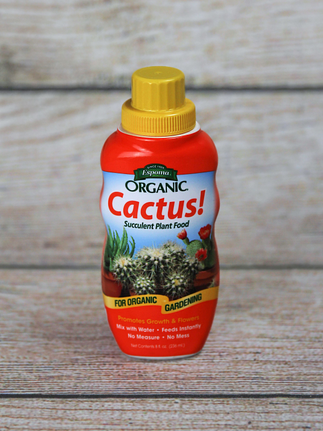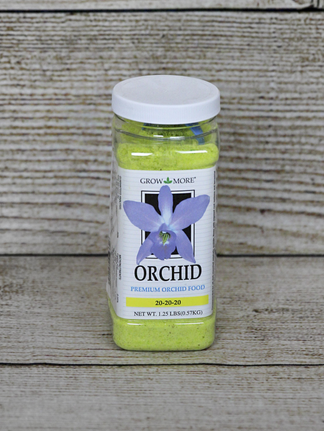An Expert's Guide on How to Fertilize Houseplants
- Bath Garden Center
- Apr 13, 2023
- 6 min read
Updated: Sep 26, 2023
Fertilizing houseplants is an important task that is often overlooked and undervalued by many who think that fertilizing is just the industry's way of getting people to spend more money. This, however, is so far from the truth! If you are not convinced of the value of fertilizing your houseplants, we would encourage you to read our blog on the importance of fertilizing houseplants. If you have realized the importance of this task when it comes to caring for your houseplants, we are excited you are here and hope you are able to find all of the answers to your questions in this article.

Should I Fertilize My Houseplants?
Houseplants require nutrients in order to grow strong, healthy, and beautiful, and these nutrients are quickly depleted due to the plants' confined growing space. Without being fertilized, your plant may not die immediately, but the gradual decline in its health will be somewhat inevitable. This decline in health may happen so slowly that you do not even realize it, however, if you do begin to notice that your plant is looking pale or unhealthy, there have been no recent signs of new growth, and there is nothing else that seems to be wrong with your plants such as underwatering, overwatering, pests, and the like, it is highly possible that your plant is just severely lacking the nutrients it requires to grow strong and healthy. If you would like to learn more about why it is so important to fertilize your houseplants, check out our blog! We understand the skepticism around this topic, but we hope this can convince you of the necessity of this task if you want to maintain beautiful and thriving plants.
When To Fertilize Houseplants
It is best to fertilize houseplants when they are actively growing. While this is usually during the warmer parts of the year, some plants grow more actively during the winter, so knowing your plants' needs is important if you are to fertilize at the appropriate time of the year. Your plant will be soaking up the most water and needing the most nutrients when it is actively growing. Fertilizing when a plant is in its dormant state can lead to damaged plants. This is because they may not absorb all the fertilizer, and if it is not soaked up by the plant, it can cause burn damage to the roots of the plant. So, a general rule of thumb is to fertilize during the warm months of the year. It is also generally safe to fertilize plants if you notice new growth, as this is an indication that your plant is actively growing and able to put extra nutrients to use.
How Often To Fertilize Houseplants
In general, most houseplants can and should be fertilized once per month. This will depend slightly on the type of houseplant fertilizer you use, how concentrated the fertilizer is, and the plant. Some plants are more vigorous growers, while others grow more slowly and may not need as frequent of fertilization. So, again, be sure to know your plants and their needs. It is also very important to follow the directions specific to the type of fertilizer you choose to use. Many fertilizers are concentrated and require being watered down significantly to avoid damaging your plant. There will always be instructions on the container, but if you still are unsure of how to fertilize your plant, you can always reach out to us and we will be happy to help!

How To Fertilize Houseplants
Fertilizing houseplants is a simple task, though there are some very important things to be aware of so you do not harm your plants in the process. Let's get into some of the details of how to fertilize houseplants!
Assess Your Plant
First, assess your plant. What time of year is it? Is it showing any new growth? Is it ready to be watered? Since most fertilizers are diluted by water, it is easiest to incorporate your fertilizing schedule into your watering schedule. If your plant does not need to be watered, wait to fertilize until it does need to be watered. There is no need to cause problems due to overwatering just to get some nutrients in the soil. Your plant can wait an extra week or two until it is ready for both water and nutrients.
Choose A Fertilizer
There are hundreds of different options out there when it comes to fertilizer for houseplants, and everyone has their own ideas as to which houseplant fertilizers are best. Our suggestion is to pay attention to the NPK value that should be listed on the bottle. This value represents the ratio of Nitrogen, Phosphorous, and Potassium in the fertilizer. Nitrogen primarily helps with foliage growth, phosphorous aids in root growth and fruit/flower development, and potassium helps the plant perform all its essential functions properly. In some fertilizers, Pot Ash, which is a potassium alternative in many manmade fertilizers, may be listed in place of potassium. Some fertilizers have more of one nutrient than another, for example, fertilizers to encourage foliage growth are generally highest in nitrogen, fertilizers for blooming plants are generally highest in phosphorous, and all-purpose fertilizers generally have relatively equal ratios of all three. Certain plants like cacti, orchids, or African violets also have specific needs when it comes to nutrients, which is why it is always good to get fertilizers specific to these different types of plants so that you can cater to their needs appropriately. Here are some of our favorite fertilizers and recommendations for different types of plants and purposes:
Dilute Your Fertilizer
Most fertilizers are a concentrate that needs to be watered down before use. This is very important, as applying a concentrated fertilizer to your plants will overwhelm your plant, burn their roots, and likely cause significant, irreversible damage. Every fertilizer has different application rates, so be sure to follow instructions that are specific to the product you are using. These instructions can usually be found on the back of your container.
Water Your Plants
Now it is time to simply water your plants with the fertilizer solution. Water as you would normally or according to the watering instructions on the back of your fertilizer bottle. Be sure to discard any excess water sitting in the saucer so that your plant is able to dry out properly. For more instructions on how to water houseplants, check out this blog! A quick note for plant parents that prefer to bottom water their plants: it is highly recommended to overhead water your plants every couple of months to help flush out any extra unused fertilizer that may be sitting in the soil. Excess fertilizer in the soil can cause damage to the roots of your plants if you continue to fertilize, so top watering periodically is a great way to help avoid any damage to your plant.
Watch Your Plants Grow and Thrive
Give your plants some time to soak up the nutrients you added to the soil and put them to use. Before long, you should begin to notice accelerated growth in your houseplants! Once you see how much better your plants perform when provided with their essential nutrients, you will be convinced of the value of fertilizing houseplants. Once you see this positive change in your plants, don't get overly excited and start fertilizing too much or too often. How often to fertilize houseplants can depend on the type of plant in question, but in general, it is best to fertilize once per month. Over-fertilizing can cause significant damage to your plant that can take a long time to recover from. For best results, create a fertilizing schedule and try to stick to it. Consistent nutrients and a consistent fertilizing and watering schedule will work wonders for your plants, and nothing brings more joy than seeing your favorite plants thrive.
Fertilizing Houseplants Questions
If you have any questions about how to fertilize houseplants, when to fertilize houseplants, how often to fertilize houseplants, or any other questions pertaining to houseplants and fertilizer, please reach out! We are here to help with all your plant endeavors and are happy to recommend fertilizers, help you understand application best practices, and help you learn how to read your plant and understand its needs. Fill out a contact form to get in touch with us, or check out our Houseplant Consultations page for more helpful information!













